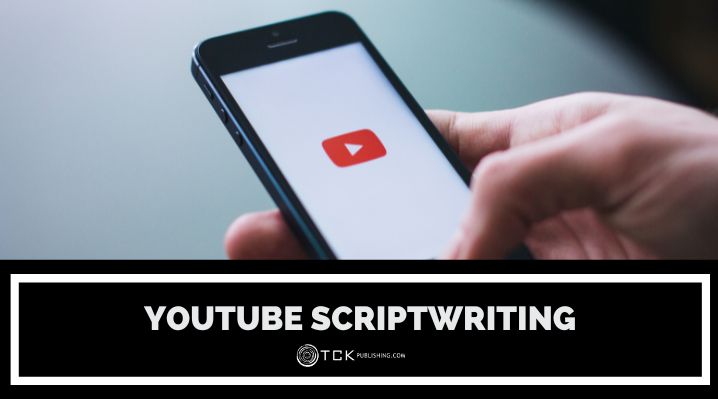
YouTube has come a long way—from casual vlogs to polished, professional productions. These days, great camera work isn’t enough. Often, the main difference between amateur and pro content is simple—a solid script.
As video keeps dominating online platforms, knowing how to write an engaging script isn’t optional—it’s essential. Whether you’re a writer, creator, or marketer getting into video, this guide will show you how to do it right.
The Rise of Scriptwriting for Social Media
Ten years ago, most YouTube videos were casual and off-the-cuff. Now, even the most spontaneous-looking content is usually planned out. Why? Because creators have learned that structured videos perform better.
And it’s not just a YouTube thing. Video is everywhere—TikTok, Instagram, Facebook. These platforms have completely changed how people consume stories, ideas, and information.
The best creators don’t wing it. They plan what they’re going to say and how they’ll say it. That’s where scriptwriting comes in.
It’s not just for movies or ads anymore. If you’re making videos to inform, entertain, or convert, scriptwriting is a skill you can’t skip.
Understanding the Platforms
Most social media platforms with video features fall into one of two categories: long-form or short-form.
Long-form platforms, like YouTube, are perfect for deep dives, tutorials, reviews, or storytelling. They give you more room to build a connection, explain complex ideas, and guide the viewer through a journey.
Short-form platforms, like TikTok, Instagram Reels, and YouTube Shorts, are all about quick hits. You’ve got just a few seconds to grab attention, deliver value, and leave an impression.
Why This Matters
Even if you’re focused on YouTube, your videos might show up on TikTok or Instagram. A good script works across platforms. Learning both styles gives you more freedom—and more reach.
For example, a YouTube script can be trimmed to its core message for TikTok or Instagram Reels. One idea, multiple formats.
That’s key if you’re trying to grow your audience. But here’s the catch: every platform has its own rhythm. What works on YouTube might fall flat on TikTok, and vice versa. To keep viewers interested, you need to know how each platform grabs attention—and what people expect.
This article focuses on YouTube, but the tips apply to most video platforms.
Scriptwriting for Long-Form YouTube Content
When creating scripts for traditional YouTube videos (typically 5+ minutes), focus on depth and viewer retention.
Do Deep Research
Develop a comprehensive research document with 2-3x more material than you’ll actually use in your final video. This gives you room to explore different angles and keeps your content rich.
Create a “content bank” filled with examples, stats, and quotes to pull from while writing. If possible, interview experts. It adds credibility and shows your script is backed by real insight.
This goes beyond writing the script. It prepares you for any potential questions from your audience.
Use Two-Part Hooks
Unlike short videos, long-form content works best with a two-part hook—one to grab attention, and another to build interest.
Example: “I spent $10,000 on five laptops, from different brands.” (initial hook) “And today, I’ll show you which one’s actually worth the money.” (extended hook)
Segment Your Script
Break your script into clear chapters, each lasting 3–5 minutes. This makes your content easier to follow and helps viewers absorb the info in chunks. Build “mini-arcs” into each section—with a quick intro, main content, and a short wrap-up.
Use clear transitions to connect the segments. Say things like, “Now that we’ve covered X, let’s move on to Y.” It helps guide your audience through each shift. Mark each segment while writing so it’s easy to stay organized and adjust as needed.
Narrative Threading
The best scripts keep viewers interested from start to finish. However, many of your audience might drift off in places or struggle to remember information. Instead of a simple, linear discussion, you need to structure your script with payoffs and callbacks.
One way to do this is to plant little promises that something valuable is coming. For example, say “Later, I’ll reveal which technique professionals use most.” This creates anticipation and gives viewers a reason to stick around.
Or you can refer back to something you said earlier using lines like, “Remember those lighting issues we talked about?” This helps you reinforce key points and tie the whole video together.
Scriptwriting for Short-Form YouTube Content
Short-form content demands completely different scripting techniques to maximize impact in 60 seconds or less:
Deliver Immediately
If your video doesn’t hook viewers in the first second or two, they’ll scroll right past it. There’s no warm-up time—you need to deliver value immediately.
Start with the result or revelation, then unpack the process. For example: “This 10-second tweak doubled my video views last month—here’s exactly how it works.” This approach frontloads the benefit and creates immediate interest.
Give people a reason to stop scrolling. The goal is to spark curiosity or emotion before they even think about swiping away.
Visual Blocks
Break your script into “visual blocks”—5 to 10 seconds where both the dialogue and the visuals align to communicate a complete idea. This way, what you’re saying and what viewers are seeing work together seamlessly to reinforce the message.
For example, if you’re explaining how to tie a knot, you might say, “First, loop the rope around your hand,” while showing a close-up of the action. The visual reinforces the instruction, making it clearer and easier to follow.
Stick to Simple
Focus on one problem, tip, or fact. Keep your sentences short and cut filler words. Don’t try to cram too much in.
Break down a topic into its core components. If you’re covering multiple tips or ideas, treat each one like a separate, manageable unit. Create a separate script for each component.
Depending on the task, many scriptwriters often start with a long-form script, and then extract key moments that can stand alone in bite-sized videos.
This way, you don’t risk losing your audience in a sea of information. The simpler you keep things, the easier it will be for your viewers to absorb and remember the content.
Practical Tips for Both Formats
These scriptwriting techniques work across all video lengths and platforms.
Script with Visuals in Mind
When writing your script, always think about what viewers will see. This visual planning makes your content more engaging. Write notes for what’s on screen. Suggest when to show graphics, b-roll, or jump cuts.
Remember that viewers process visual information faster than spoken words. Sometimes showing is better than telling, so script moments where you can demonstrate concepts rather than just explaining them.
Write How People Talk
Keep your language casual and clear. Use contractions. Read your script out loud and cut anything that sounds stiff or robotic.
Use Powerful Hooks
The first 15 seconds determine if viewers stay or leave. Strong hooks include:
- Surprising statistics or facts
- Intriguing questions
- Bold statements
- Preview of an impressive result
- Relatable problems
Don’t limit yourself to verbal hooks. Use visuals, sound effects, or quick cuts to grab attention right away.
Remember, your goal is to spark curiosity fast. Make viewers feel like they have to keep watching to see what comes next.
Match Script Pacing to Visual Changes
The rhythm of your script should align with visual elements:
- Create natural pauses where viewers need time to absorb complex visuals.
- Script shorter sentences during fast-paced visual sequences.
- Match visual transitions with topic transitions.
If your script and visuals don’t match, your audience will disengage. Think about how irritating it is when a movie’s audio is even slightly out of sync.
The Fundamentals of Scriptwriting for Social Media
All good scripts follow a basic structure:
- Hook (grab attention in the first 15 seconds)
- Intro (tell viewers what they’ll get from the video)
- Main content (deliver on your promise)
- Conclusion (summarize key points)
- Call-to-action (tell viewers what to do next)
This framework works for videos of any length. The proportions change, but the elements remain the same.
However, the best scriptwriters also continually refine their process. They analyze what works, learn from their mistakes, and adjust their approach as platforms evolve. Adapting is key to staying relevant and creating content that resonates with viewers.
How do you write your YouTube scripts? Share your thoughts below!
If you enjoyed this post, then you might also like:
- How to Get a Job Writing for TV
- How to Write a Script: Tips for Bringing Your Writing to Life
- 8 Non-writing Skills All Writers Should Learn

Cole is a blog writer and aspiring novelist. He has a degree in Communications and is an advocate of media and information literacy and responsible media practices. Aside from his interest in technology, crafts, and food, he’s also your typical science fiction and fantasy junkie, spending most of his free time reading through an ever-growing to-be-read list. It’s either that or procrastinating over actually writing his book. Wish him luck!
